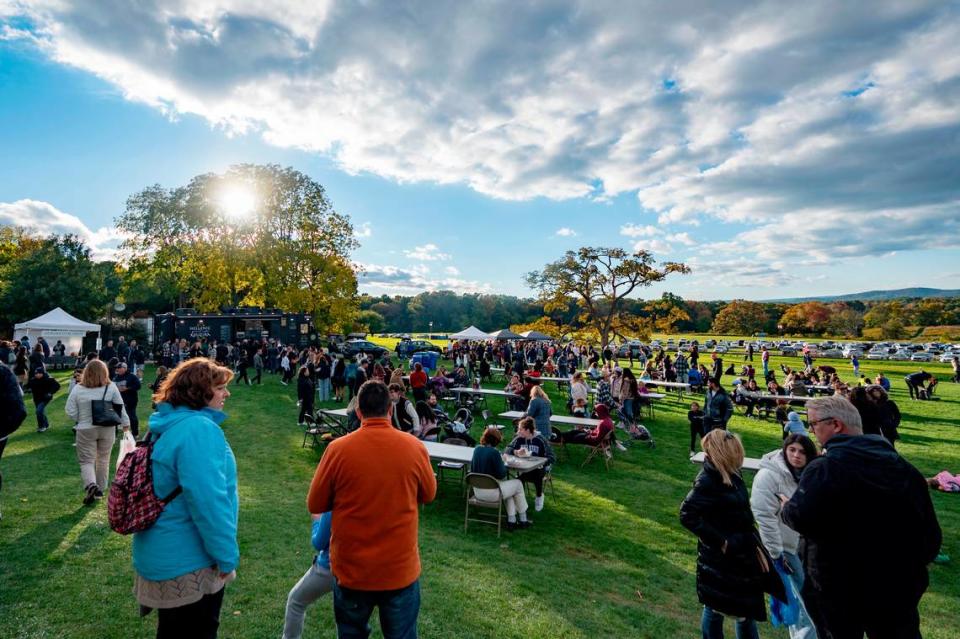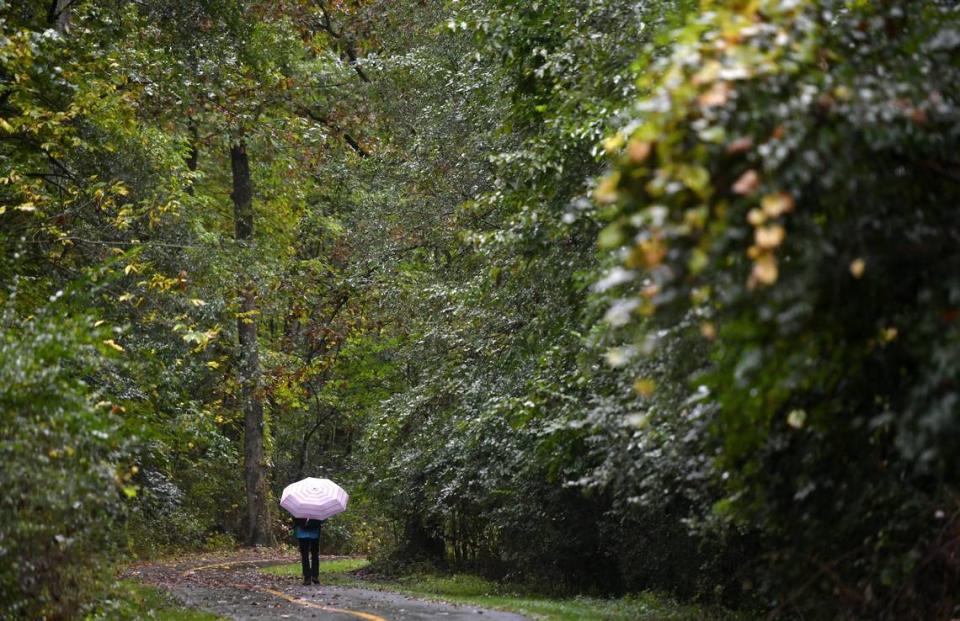An arboretum on every campus? New Penn State network has lofty goals: What to know
Penn State is moving forward with a plan that could one day ensure each of its 24 campuses boast an arboretum — or a public space specializing in trees and shrubs — even if improving campus appearance isn’t the priority.
Sure, officials are excited about the prospect of gradually beautifying the commonwealth campuses, with new walkways a possibility at some locations and more trees and plants at others. But, above all, officials are looking forward to the research and teaching opportunities that come along with such a blueprint.
In December, seven campuses announced the launch of the “Commonwealth Arboreta Network,” which calls for the involved campuses to inventory trees and plant life, collaborate on research, and provide a hands-on space for learning. There’s not yet a complete timetable for the network but, eventually, officials envision cooperation — and arboreta — from all 24 campuses.
So far, those involved include University Park, Abington, Altoona, Behrend, Berks, Mont Alto and Schuylkill. UPark already has a well-known arboretum, while arboreta vary at the network’s other campuses. Schuylkill established an accredited arboretum last year, while the others range from needing a few more woody-plant species to already having arboreta that simply need uniform accreditation.
“The person who’s most skeptical of this is still going to love it,” said Casey Sclar, director of both the network and The Arboretum at Penn State. “It’s there to make people feel better because we know, when people connect with nature, they flourish. It makes good economic sense because this is not the type of thing that will draw heavily on tuition dollars. It also stimulates private partnerships, as well as fundraising efforts.
“So it’s not going to draw heavily on campuses resources; it’s going to benefit campus resources. And, obviously, it makes good environmental sense because, by having more trees, we’re helping to solve our climate goals.”

How will this help?
Although campus visitors might enjoy more peaceful scenes and students might enjoy improved outdoor study areas, that’s a byproduct of the network — and not the main emphasis.
Each of the seven founding campuses come from different regions of Pennsylvania, and Sclar said the research done within the network should prove invaluable. Take the sugar maple, for example. The trees were once scattered all across the state and actually need snow to grow properly but, due to climate change, their populations have dwindled.
With Penn State’s new Commonwealth Arboreta Network, once the inventories are completed, researchers can compare growth rates by region and climate to better understand the tree’s planting zone and future outlook. For other species, they might factor in elevation, discuss pests and pesticides, calculate how much carbon it sequesters, etc.
“From the bottom of the state to the top of the state, we really do see a lot of microclimates,” said Mary Ann Smith, faculty chair of the network and curator of the Penn State Schuylkill arboretum. “You can have two cities that are on the same latitude, but they don’t have the same growing patterns because of something like elevation. ... It gets to be really interesting when we look at how the climate patterns are across the state and what potential that can have on trees.”
It’s unclear if there’s another network in the country similar to Penn State’s but, because of the university’s layout and land-grant mission, it’s distinctive. Smith envisioned arboreta where locals thinking of purchasing a sapling for their yard might stop by to see how the trees look at different ages, rather than taking the employee’s word at Lowe’s or Home Depot. And she’s already taken her students to the arboretum on the Schuylkill campus, where they’ve calculated tree ages and water runoff.
Arboreta tend to satisfy the main parts of the university’s land-grant mission, which focuses on teaching, research and service. So Smith and Sclar said the network was a natural fit for Penn State.
“This is a great opportunity to bring Penn State together in a way most states don’t have the opportunity to,” Smith added. “We really do want to have every Penn State campus have an arboretum that’s accredited. We realize some campuses are super close, and some are going to be working at it a while — but that’s OK.”

What’s the future?
Sclar declined to estimate how many years it might take for every campus to have an arboretum. But he was pleased with the network’s early response.
He’s already fielded inquiries from several other interested commonwealth campuses. And he hopes to add 2-3 more campuses to the network later this year, along with another 2-3 next year.
Sclar, the former executive director of the American Public Gardens Association, also expects the seven founding members to finish inventorying their trees and shrubs by the end of the year. Joint research projects should follow soon thereafter, he said.
“You can’t run until you can walk,” Sclar added.
Ideally, officials would also like to see Penn State’s arboreta formally accredited. At ArbNet, which partners with the American Public Gardens Association, accreditation can take about six months — and requires a minimum of 25 species of trees/woody plants, along with an organizational plan, governing board or authority, staff/volunteers and some level of public access.
There are four levels of arboreta. Level I requires a minimum of 25 species and the above requirements, while the higher levels gradually become more demanding. Level II, for instance, requires a minimum of 100 species in addition to enhanced educational and public programming. Some Penn State campuses are closer to Level I accreditation than others. UPark boasts a Level 2 arboretum, while Schuylkill’s is Level 1.
“Some of our commonwealth campuses were converted from former business parks, and they don’t have the level of biodiversity needed — but maybe they have projects underway with the Office of Physical Plant that, once they’re completed, they’ll easily qualify,” Sclar said. “There are campuses that want to remove the vast amount of parking and replace it with a landscape people can enjoy as it grows.”
Plans for the network started not long after Sclar joined the university in 2022. Starting such a network was one of Sclar’s dreams, something he thought might take a few years to truly begin. But, to Sclar’s surprise, it turns out he wasn’t the first at Penn State to have that dream.
An alum, James Ingram, had already set aside an endowment to establish such a network. So Ingram, chief operating officer of Bartlett Tree Experts, was able to jump-start the vision that officials say has been fully embraced by the university.
“I have yet to encounter, within Penn State, resistance to this,” Sclar said. “Everyone sees the benefit for what it is. ... It’s a living laboratory. It’s a living museum. It’s a living library of plants.”

